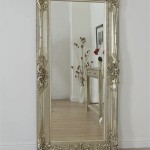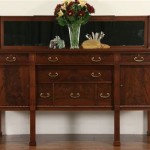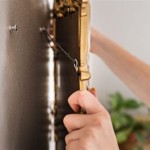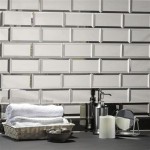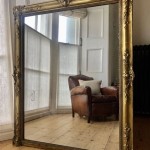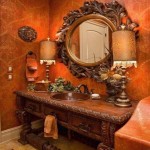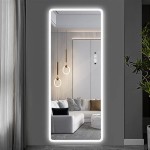Do You Look Bigger or Smaller in the Mirror?
The question of whether mirrors accurately reflect our size is a common one. Many individuals perceive a discrepancy between their mirrored reflection and how they believe they appear in photographs or to others. This perception can be influenced by a variety of factors, ranging from the type of mirror used to psychological perceptions of body image.
Factors Influencing Perceived Size in Mirrors
Several elements contribute to how one perceives their size in a mirror. Understanding these factors can help clarify why mirror images might not always align with reality.
*
Distance and Perspective:
Standing close to a mirror can create a slightly wider appearance, particularly in close-up views of the face or specific body parts. Conversely, standing further away provides a more holistic view but can minimize perceived size differences. *Mirror Type:
Different types of mirrors can distort images to varying degrees. Inexpensive or poorly manufactured mirrors may have imperfections in the glass or backing that can warp reflections. Concave mirrors, often found in magnifying mirrors, curve inwards and magnify the reflected image. Convex mirrors, sometimes used for security purposes, curve outwards and shrink the reflected image. Only flat mirrors, specifically designed for true reflection, provide the most accurate representation. *Lighting Conditions:
Lighting plays a crucial role in how we perceive our appearance. Dim lighting can soften features and create the illusion of a slimmer silhouette. Bright, direct lighting, on the other hand, can highlight imperfections and potentially create a perception of larger size. The angle of the light source also influences shadows and highlights, which can affect perceived dimensions. *Clothing and Posture:
Dark clothing tends to create a slimming effect, while lighter or brighter colors can make one appear larger. Posture significantly impacts perceived size; standing up straight can create a taller, leaner appearance, while slouching can make one appear shorter and wider. *Psychological Factors:
Body image perception is highly subjective and influenced by psychological factors such as self-esteem, mood, and social comparisons. Individuals with a negative body image may perceive themselves as larger than they are, regardless of the accuracy of the reflection. Conversely, those with a positive body image may perceive themselves as smaller or closer to their actual size.The Camera's Role in Size Perception
Photographs often contribute to the perception of looking different than one's mirror image. This difference stems from several photographic factors.
*
Lens Distortion:
Camera lenses, depending on their focal length and quality, can introduce distortion. Wide-angle lenses, often used in selfies or group photos, can distort features and make objects closer to the lens appear larger. Telephoto lenses compress perspective and can make subjects appear slimmer. *Camera Angle:
The angle from which a photo is taken significantly impacts perceived size. A high angle can make a subject appear smaller, while a low angle can make them appear larger. *Pose and Positioning:
Similar to posture in front of a mirror, posing and positioning in a photograph can significantly alter perceived size. Angling the body or limbs towards or away from the camera can create illusions of larger or smaller size respectively.Understanding the "True" Reflection
Achieving a genuinely accurate reflection requires careful consideration of the factors mentioned above. Minimizing distortion and focusing on objective observation can help individuals develop a more realistic perception of their size.
*
Using a Flat Mirror:
Opting for a high-quality, flat mirror designed specifically for accurate reflection is essential. Avoiding magnifying or decorative mirrors, which often distort images, is crucial for an objective view. *Optimizing Lighting:
Even, diffused lighting, ideally natural daylight, provides the most accurate representation. Avoiding harsh shadows or overly bright lighting can help eliminate distortions in perceived size. *Maintaining a Neutral Posture:
Standing upright with a relaxed posture provides a more accurate reflection of one's actual size and proportions. Avoiding slouching or deliberately posing can help minimize distortions caused by posture. *Considering Multiple Perspectives:
Viewing oneself from different distances and angles in the mirror can offer a more comprehensive understanding of one's appearance. This approach can help counteract the potential for distortion from a single, fixed viewpoint. *Focusing on Overall Proportions:
Rather than fixating on specific body parts, focusing on overall proportions and body shape can contribute to a more realistic self-perception. This approach encourages a holistic view of one's appearance, rather than focusing on isolated areas. *Seeking Professional Guidance:
If concerns about body image significantly impact self-esteem or well-being, seeking professional guidance from a therapist or counselor can be beneficial. These professionals can provide support and strategies for developing a healthier body image and managing body image concerns.The Importance of Body Positivity
While understanding the factors influencing perceived size is important, cultivating a positive body image is paramount. Acceptance and appreciation of one's body, regardless of perceived size discrepancies in mirrors or photographs, contribute to overall well-being.
*
Focusing on Health and Functionality:
Shifting focus from appearance to health and functionality can promote a more positive body image. Appreciating the body's capabilities and strengths can foster self-acceptance and reduce the emphasis on perceived flaws. *Challenging Negative Self-Talk:
Identifying and challenging negative thoughts about one's appearance is crucial for developing a positive body image. Replacing negative self-talk with positive affirmations can gradually shift perspectives and promote self-acceptance. *Surrounding Oneself with Positive Influences:
Cultivating a supportive social environment and limiting exposure to unrealistic body ideals portrayed in media can contribute to a healthier body image. Surrounding oneself with positive influences that promote self-acceptance can foster a more positive self-perception.
Why Do I Look Diffe In Mirrors 5 Common Reasons

Why Do I Look Diffe In Mirrors 5 Common Reasons
Why Do We Look Fitter In Gym Mirrors Quora

Do Mirrors Make You Look Bigger

Fuming Woman Accuses High Street Chain H M Of Using Curved Mirrors That Make Customers Look Fatter The Sun
Do The Mirrors In Gyms Make You Look Bigger Quora

Why Do I Look Diffe In Mirrors 5 Common Reasons

New Skinny Mirror Makes You Look 10 Pounds Thinner

Here S Why You Look Better In Mirrors Than Do Pictures Upworthy

Why Do Some Mirrors Make Me Look Skinnier Than Others Here S The Truth About Fat And Slim Sun
